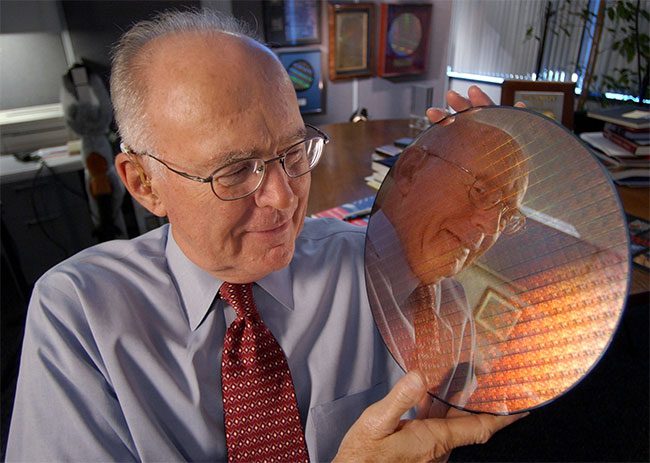His innovations in semiconductor chips transformed personal computers into an essential tool in modern life and helped create the iconic Silicon Valley.
Intel and the Gordon and Betty Moore Foundation have announced that Intel co-founder Gordon Moore has passed away surrounded by family in Hawaii at the age of 94. In 1968, together with his longtime friend Robert Noyce, Moore founded what is now the giant Intel. However, much of Moore’s fame comes from the famous “Moore’s Law” – which became a guiding principle for semiconductor manufacturing for decades.
Moore’s Law, articulated in 1965, states that the number of transistors on a microchip would double approximately every year. This law has played a crucial role in driving the semiconductor industry forward. In 1975, Moore adjusted this prediction, forecasting that the number of transistors would double every two years – a prediction that has proven accurate to this day.

Gordon Moore. (Photo by Washington Post).
After being a founding member of Fairchild Semiconductor, Moore and Noyce established Intel in July 1968. Their first hire was Andy Grove, forming the famous trio that led Intel to success.
Initially, Intel started with $2.5 million from investors and produced Static RAM (SRAM). Then, in 1971, the company shifted to manufacturing processors, launching the Intel 4004 – the first commercial microprocessor. Intel later pioneered the use of the x86 instruction set in 1978 when they introduced the legendary Intel 8086 chip – the first building block for their empire based on x86 architecture. Today, the company continues to focus on CPUs and has a market capitalization of $167 billion.
Moore initially served as executive vice president until 1975, then as company president until he was appointed CEO and chairman of the board in 1979. He stepped down as CEO in 1987 but continued as chairman until 1997, when he was designated honorary chairman. He held this position until his retirement in 2006.

The legendary trio that created Intel: Andrew S. Grove (left), Robert Noyce (center), and Gordon Moore (right). Photo taken in 1978. (Photo by Washington Post).
In his later years, Moore was an active philanthropist, particularly in the fields of environmental conservation, science, and patient care. He and his wife, with whom he shared 75 years of marriage, founded the Gordon and Betty Moore Foundation, which has donated over $5 billion to charitable causes since its establishment in 2000.
Due to his significant role and stature in Silicon Valley, Moore was often invited to make predictions about the future of science and technology. However, he often felt unqualified for this role – having once dismissed the concept of personal computers, viewing it “as a joke.”
In 2015, Moore told the New York Times, “The importance of the internet truly amazes me. Initially, it seemed like just a small communication network addressing certain problems. I didn’t realize it would open up an entire universe of countless new opportunities. I wish I had predicted that.”
Intel CEO Pat Gelsinger stated: “Gordon Moore defined the technology industry through his vision and insights. He was instrumental in unleashing the power of semiconductors and inspiring technologists and entrepreneurs for decades. At Intel, we continue to draw inspiration from Moore’s Law and will pursue it until we exhaust the periodic table. Moore’s vision has truly been a guiding star for us to use technology to improve the lives of everyone on Earth. My career and much of my life have been shaped and fueled by Moore’s leadership at Intel, and I am honored and responsible for continuing his legacy.”


















































